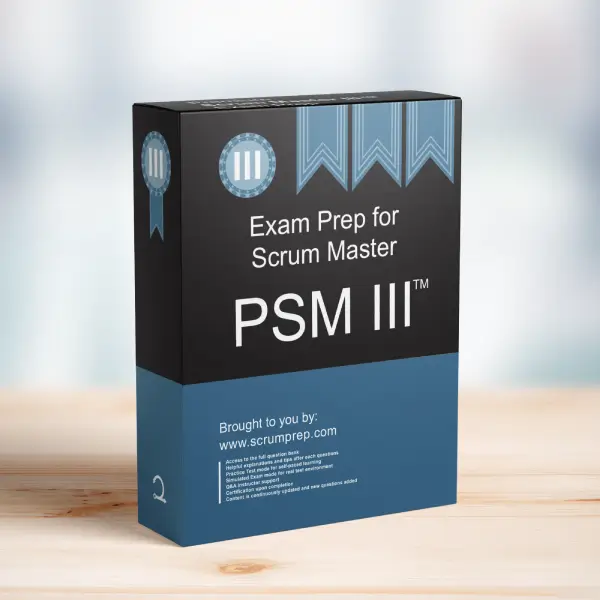Understanding Forecast and Commitment in Scrum
In Scrum, the concepts of forecast and commitment are crucial for planning and delivering work within a Sprint. These terms have distinct meanings and roles within the framework, and using them interchangeably can lead to confusion and misaligned expectations.
Exam Question
In Sprint Planning, the Developers work to forecast the Product Backlog items that will be developed during the Sprint, and the Developers make a commitment to the Sprint Goal.
Discuss forecast and commitment in the above statements and what each of them refers to.
Discuss the effects of using the terms forecast and commitment interchangeably.
Explanation
Forecast in Scrum
- Definition:
A forecast in Scrum refers to the Product Backlog items that the Developers believe they can complete during the Sprint. It is an informed prediction based on their understanding of the work involved, their capacity, and the time available in the Sprint. - Role in Sprint Planning:
During Sprint Planning, the Developers review the Product Backlog items, discuss them with the Product Owner, and estimate the effort required to complete them. Based on this estimation, they forecast which items they can realistically achieve within the Sprint. The forecast provides a clear picture of what the Developers intend to deliver by the end of the Sprint, helping the Scrum Team and stakeholders align on expectations.
Commitment in Scrum
- Definition:
A commitment in Scrum refers to the dedication of the Developers to achieve the Sprint Goal by the end of the Sprint. The Sprint Goal is a specific objective set for the Sprint that guides the Developers in their work and provides focus. - Role in Sprint Planning:
While the Developers forecast the Product Backlog items they plan to complete, their commitment is to the Sprint Goal. The Sprint Goal is the overarching purpose of the Sprint, and the Developers commit to achieving it, even if it requires adapting their approach or scope of work during the Sprint. This commitment ensures that the team remains focused on delivering the most valuable outcome.
The Effects of Using Forecast and Commitment Interchangeably
- Misaligned Expectations:
If the terms forecast and commitment are used interchangeably, it can lead to misaligned expectations between the Scrum Team and stakeholders. Stakeholders might mistakenly believe that the forecasted Product Backlog items are guaranteed to be completed, rather than understanding that the commitment is to the Sprint Goal. This can create pressure on the Developers to deliver all forecasted items, even at the expense of quality or sustainable pace. - Reduced Flexibility:
Interchanging these terms can reduce the flexibility of the Scrum Team. A forecast allows for adjustments and changes as the Sprint progresses, while a commitment is a firm dedication to achieving the Sprint Goal. Confusing the two can lead to a rigid approach where the team feels compelled to deliver all forecasted items, potentially sacrificing the ability to adapt to new information or challenges. - Impact on Team Morale:
When the forecast is mistaken for a commitment, Developers may feel undue pressure to complete all forecasted items, leading to stress and burnout. Understanding that the commitment is to the Sprint Goal allows the team to work more collaboratively and flexibly, adjusting their efforts to deliver the highest value.
Relevance to the PSM III Exam
Understanding the distinction between forecast and commitment is essential for advanced Scrum practitioners. In the PSM III exam, this knowledge is crucial for demonstrating a deep understanding of Scrum’s principles and how to apply them effectively in various scenarios.
Key Takeaways
- Forecast: An informed prediction of what the Developers believe they can complete within the Sprint, providing flexibility and a basis for planning.
- Commitment: A dedication to achieving the Sprint Goal, ensuring focus and alignment on the most valuable outcome for the Sprint.
- Clarity in Terminology: Using the terms forecast and commitment correctly helps maintain clear expectations, flexibility, and team morale.
Conclusion
In Scrum, clear communication of forecast and commitment is vital for successful Sprint Planning and delivery. While the forecast guides the team on what they aim to achieve, the commitment ensures that they remain focused on the Sprint Goal, adapting as necessary to deliver the highest value. For more insights into Scrum practices and preparing for the PSM III exam, visit our Scrum Master PSM III™ Exam Prep.



